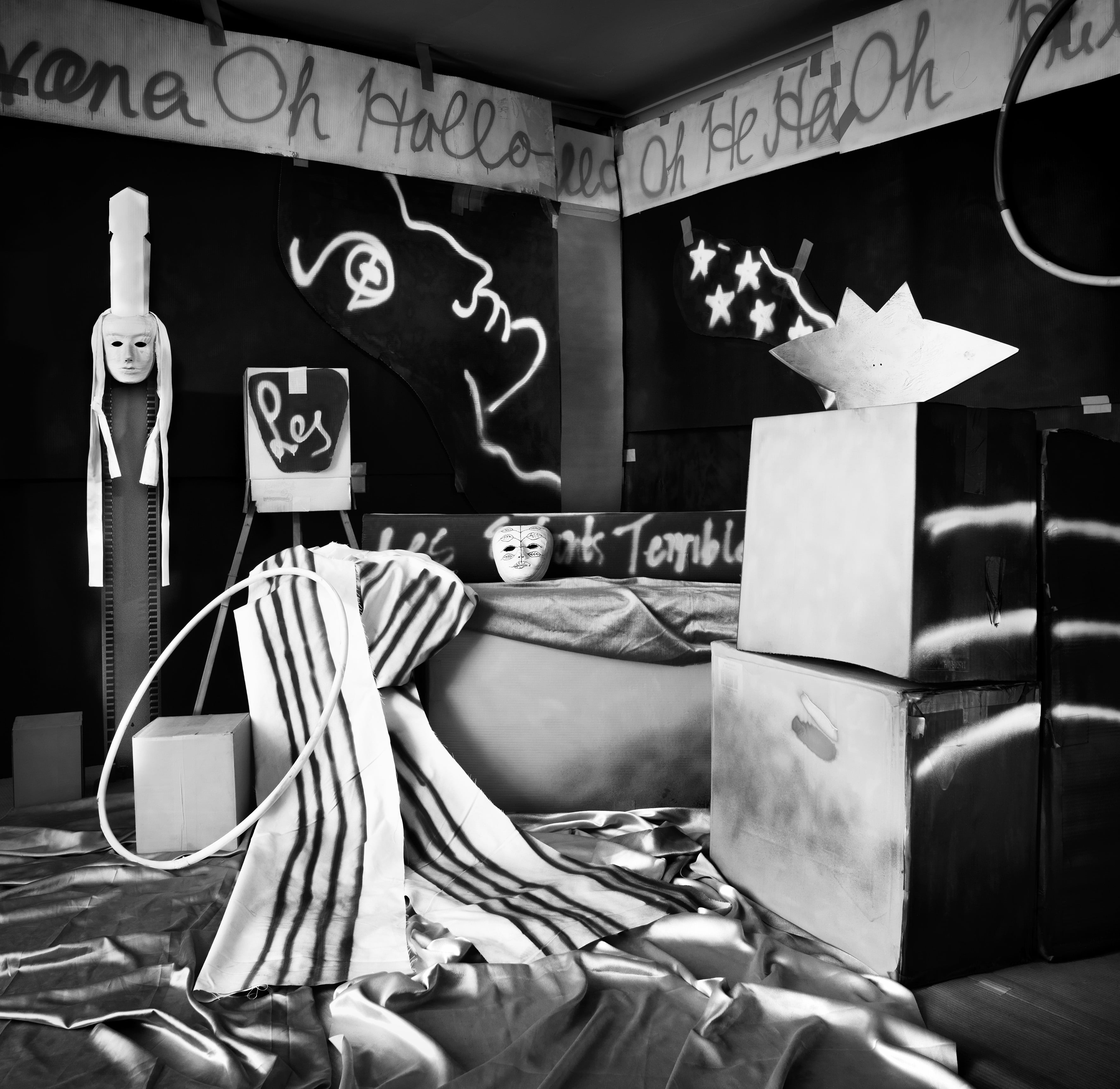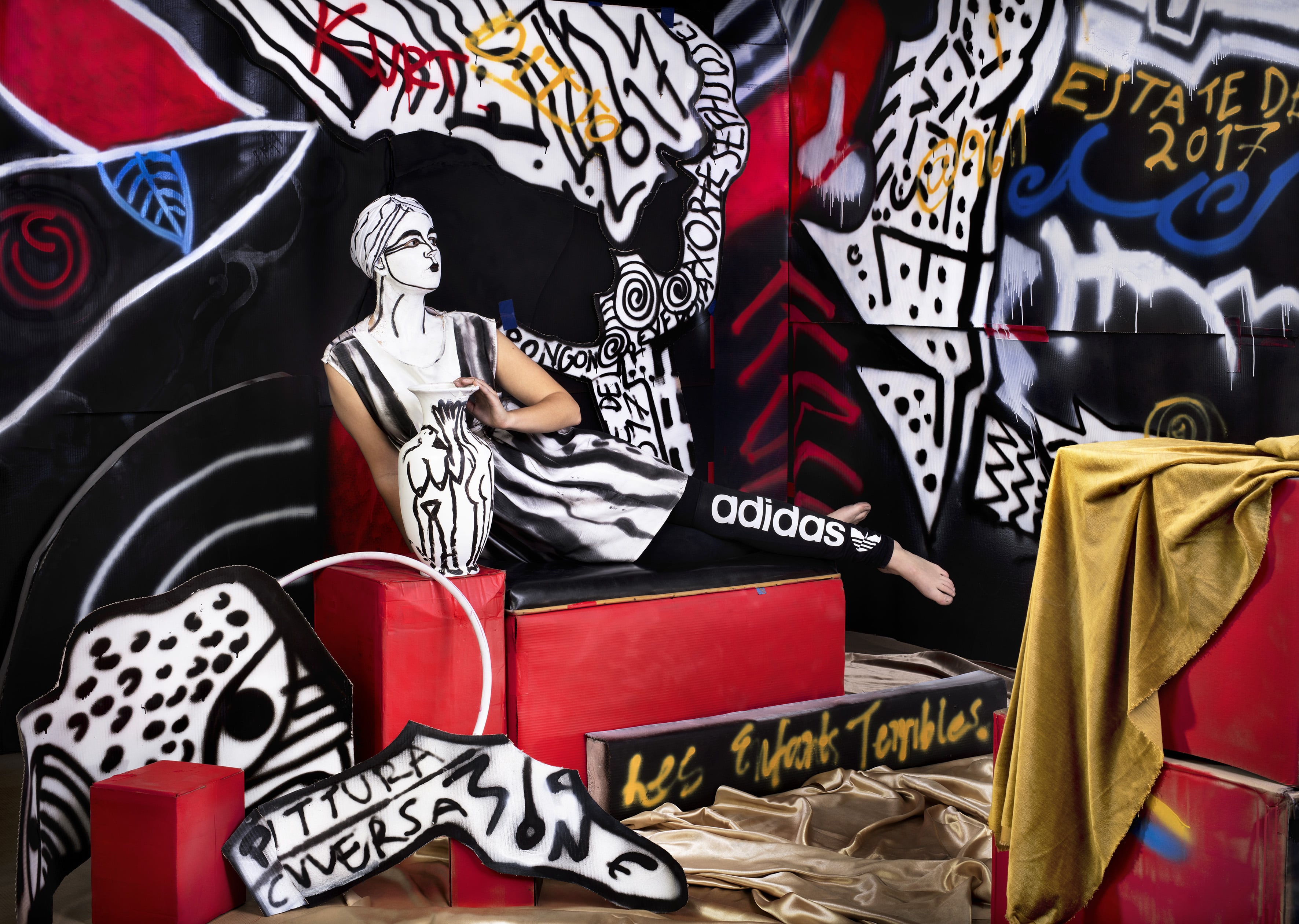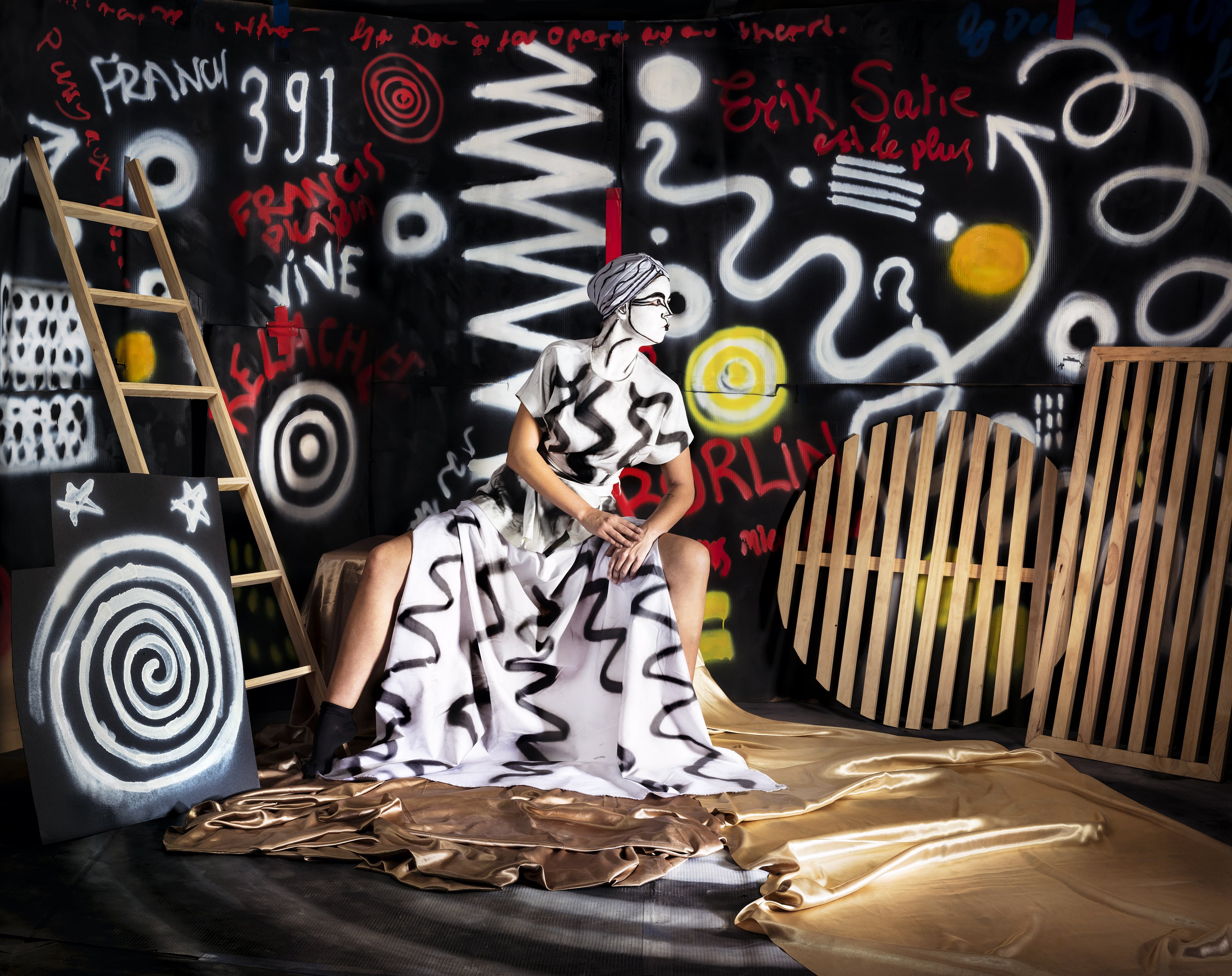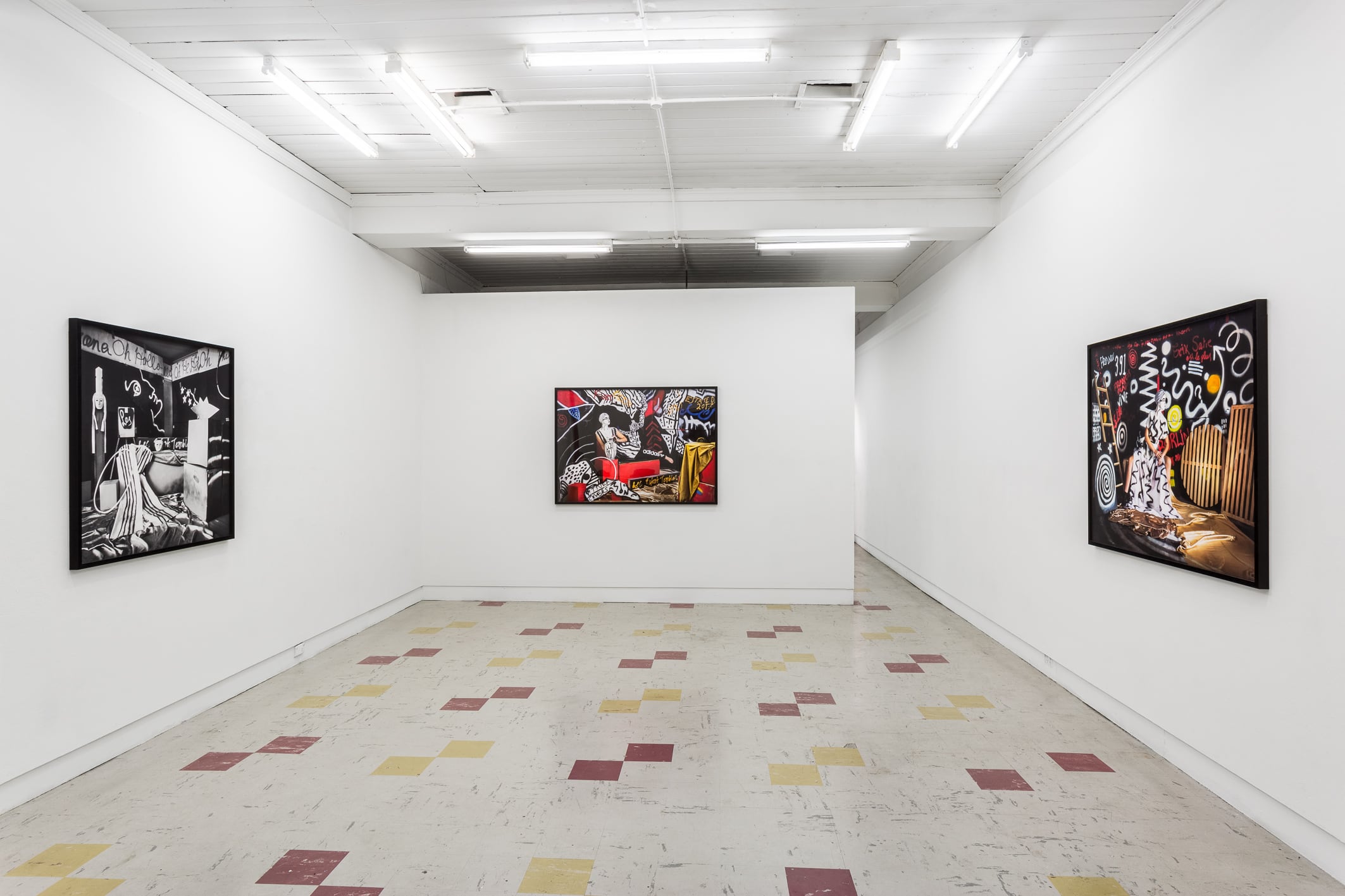



Artist: Georgina Cue
In the midst of geometric wooden structures, plush velvet drapery and other theatrical paraphernalia, a woman sits in an exaggerated stance, sheathed in a turban and cascading gown emblazoned with striking painted pleats. Beneath her, champagne satin shrouds a make-shift cardboard floor. Her face is painted a creamy ivory, the contours of her features mapped out in dark paint. The space in which she sits is flattened into a velvety black expanse and inscribed with frenetic abstract glyphs and vivid red and white text that is only occasionally legible.
This photograph, laden with coded narratives, makes up one of a trio of works exhibited at TCB for Georgina Cue’s Stages. Dealing with historicity, each of the works in the series could ostensibly pass for an intricate Modernist reproduction; upon closer inspection they reveal themselves to be constructed facades. Known for her exquisite textile installations and, more recently, elaborately staged photographs, the genesis for Stages began as a series of Expressionist photographs and the short-film, Living Room (2016) which referenced Aelita, a constructivist silent film by Soviet filmmaker Yakov Protazanov.
Cue’s new works are larger in scale than previous iterations – the broader picture plane doing greater justice to her maximalist compositions. Where the Living Room (2016) series quite specifically recreated certain Constructivist aesthetics, for Stages, Cue has fashioned a more complex, varied and perplexing visual language that is particularly alluring. Upon visiting the exhibition, it was as if I was no longer standing on TCB’s instantly recognisable linoleum floors, but instead plunged into the illusive textural realm before me, aching to touch the sumptuous velvet drapery, the make-shift wooden props and Cue’s visage slick with white paint.
Throughout Stages, Cue interrogates historical depictions of the female body: the woman is at the same time a model of avant-garde beauty and a bold satire of objectification. Miller (2017) is scored with an underlying sardonic humour; the woman reclines, her leg peeking out from her gown, revealing her to be wearing an Adidas emblazoned tracksuit underneath. In another image, Relache (2017), she sits in a decidedly un-glamorous theatrical pose of insouciant bravado, reimagining the recognisable Constructivist femme fatal and subsequently creating a figure that pushes against binary notions of gender.
This anonymous woman is the subject of the series, but at the same time she is implicated as the creator of the elaborate environment she inhabits: look closely and you can see a faint smear of spray paint on her fingers. It is clear that she had a hand in creating the Byzantine universe in which she resides – not as an idle subject but by reclaiming agency through the authorship of her surroundings.
Practices that re-enact historical aesthetics, or self-reflexively reference the canon of art history, can often stumble into dangerous territory, becoming overly nostalgic or seduced by the desire to achieve a kind of historical accuracy. What is it then that makes Cue’s work so successful? Is it her anomalous pastiche of an aesthetic that is at once John Divola-cum-Man Ray-cum-Robert Delaunay?
Perhaps it is the way in which these maximalist sets are openly constructed: here lies a ream of tape, the jagged edge of a cardboard box, a prop left only partially painted. These tableaux are so absorbing because there are such glaring fissures in the fabricated reality presented to us. Each coded reference to a Modernist movement is slippery, you can’t find your footing no matter where you look. These fractures render the woman’s cardboard universe precarious. They are compelling because her surroundings could collapse at any moment – she is frozen in perpetual tension.
But why modernism, which seems to invade vast expanses of our collective consciousness? Perhaps it is because Modernist aesthetics are iconic and instantly recognisable, and thus we can better detect the fiction woven into fact, the intentional cracks and stylistic blurring.
The first two photographs, Relache and Miller, are tightly composed around the contours of the central character. Whilst they are dramatic and inviting, there is something about the third work in the trio, Yellow House (2017), appropriately positioned at TCB’s entrance, that is particularly compelling. We are presented with the same histrionic composition: a dancer’s hoop, precariously stacked boxes and a Neo-primitivist mask, but the woman has gone. An uncanny monochromatic spectacle, the final image is permeated with a macabre miasma, somewhat evocative of crime scene documentation, yet we do not know what it is that we bear witness to.
Yellow House is temporally confounding: has the woman just left, or has she not yet stepped on stage? It is the haunting afterimage of this enigma that stays with me long after I descended the rickety steps of the gallery.
Katie Paine is an artist whose practice sometimes incorporates curating, criticism and fiction to unpack notions of historiography and the archive.
